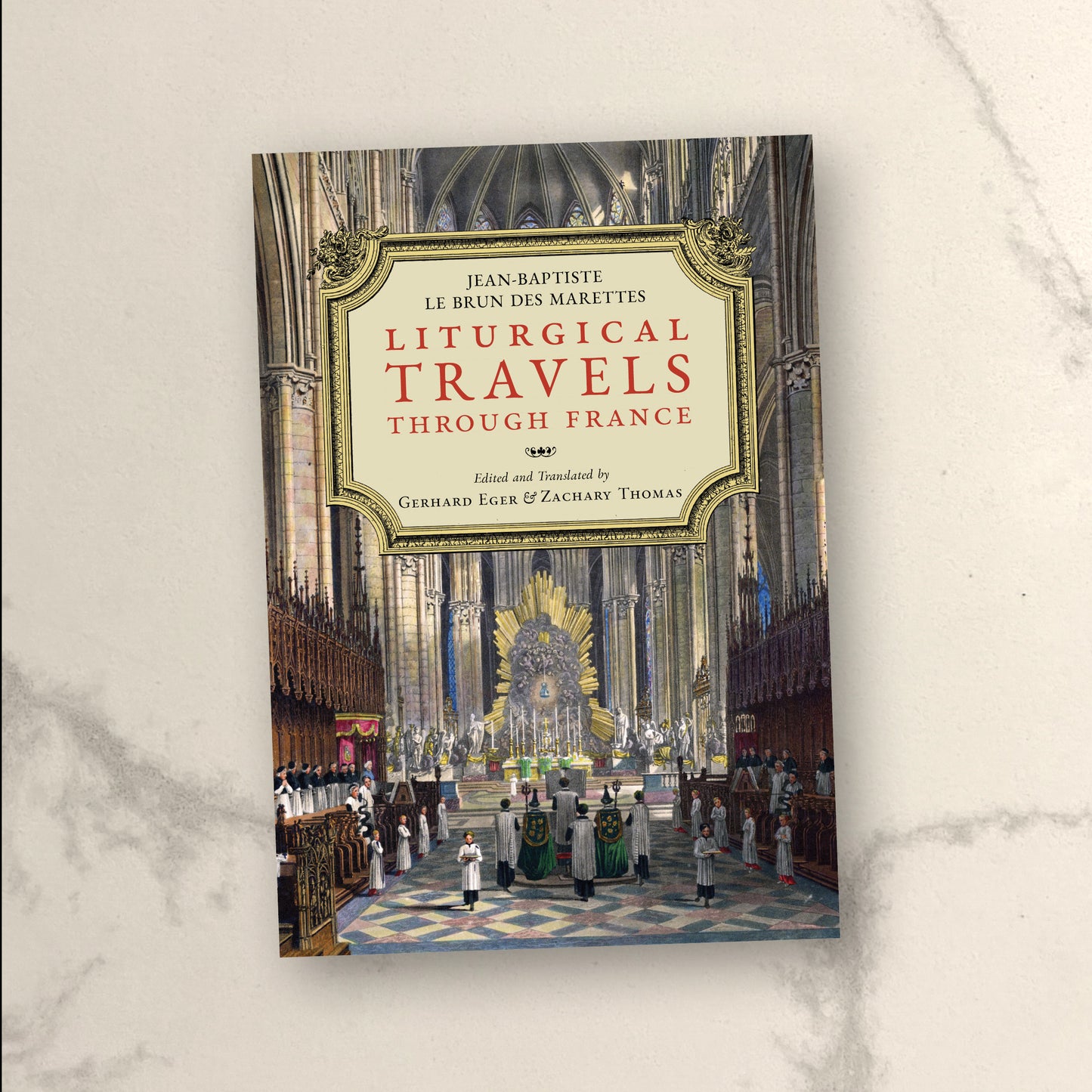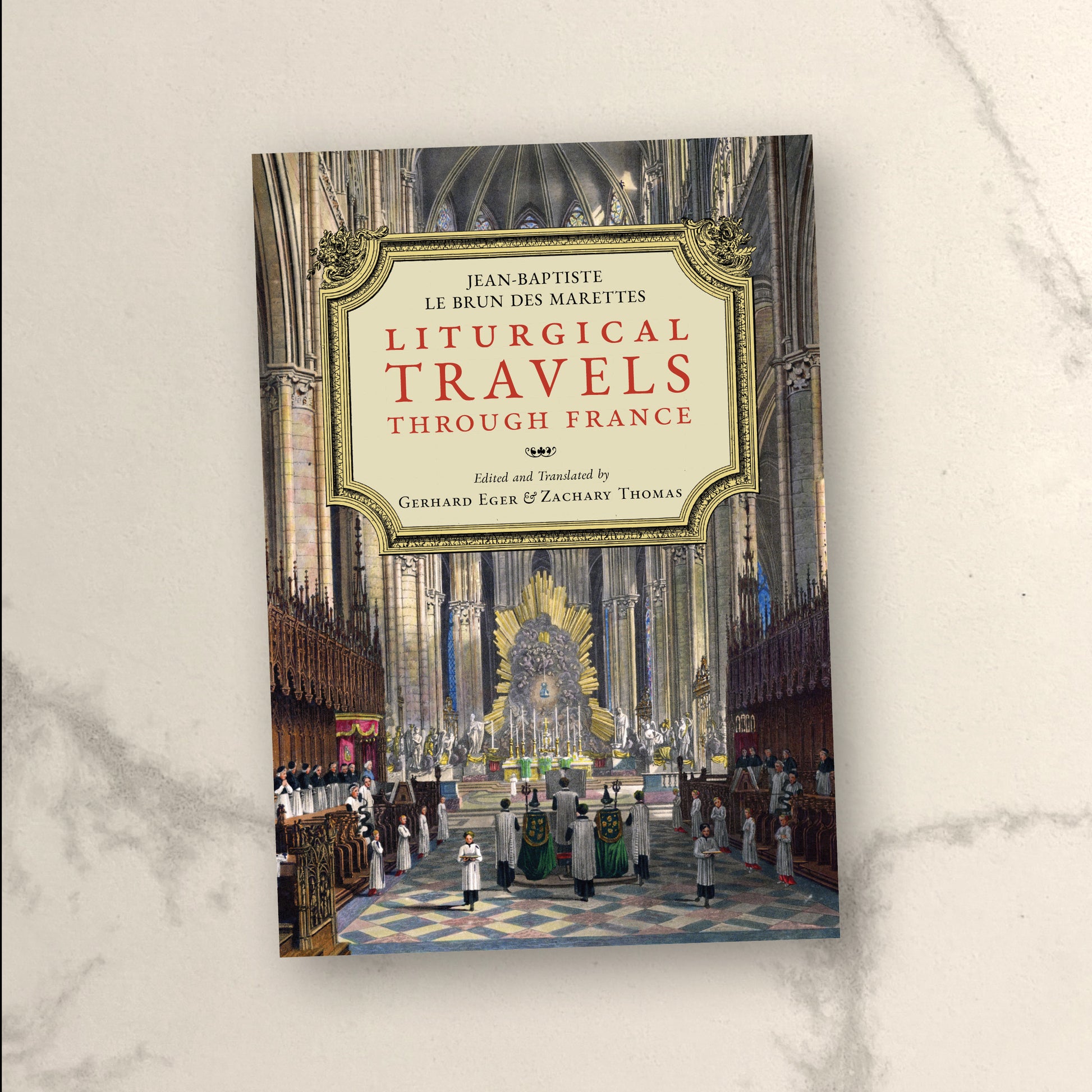Os Justi Press
Liturgical Travels Through France
Liturgical Travels Through France
Couldn't load pickup availability
From France’s 130 cathedrals, 1,500 monasteries, and hundreds of collegiate churches—served by over 10,000 canons alongside thousands of minor clerics and laymen—and from their ancient choir schools, famous ensembles of choristers and musicians, and grand organs, the sacred ceremonies of the Ancien Régime unfolded in a vast and intricate rhythm. Daily life was punctuated by the ringing of bells; regular cycles of processions around the city by the clergy, religious, and confraternities; feast days; pilgrimages to local shrines; and other fiercely guarded local rituals. From the king’s magnificent chapel at Versailles to the fields of the humblest rural parish, the Church’s calendar and ceremonies formed a sacred landscape in which every Frenchman’s life unfolded, shaping his experience of time and place, reinforcing personal, local, and national identities and binding together the stratified society of early-modern France with a common ritual life.
It is this charming and long-vanished world that the first-ever translation of Le Brun’s Liturgical Travels Through France brings to modern English readers, accompanied by copious notes and an extensive introduction that provide context for the original work and show its (at times surprising) relevance to current debates. The volume is enriched with dozens of contemporary plates as well as introductory essays and appendices by Claude Barthe, François Hou, and Shawn Tribe.
PRAISE FOR THIS BOOK
“Liturgical Travels Through France is a goldmine of information about customs, architecture, clothing, piety, liturgy, and social life in early-modern Europe. This edition was prepared with loving attention to detail and good taste. It exudes the fascination of solemn liturgy. A treasure trove of information and competent commentary for deepening our understanding of the West’s liturgical tradition.” —Alkuin Schachenmayr, O.Cist., Benedict XVI Philosophical-Theological University
“It is high time to re-evaluate the complex phenomenon of Neo-Gallicanism and to study its representatives. Le Brun des Marettes and his contemporaries were an early modern sort of ethnologists, combining philology with fieldwork. Their travelogues open up an unexpected fountain of information: a world of cathedrals, parishes, and monasteries, throbbing with life in ancien régime France . . . a bewildering mixture of medieval survival, baroque pomposity, and enlightened antiquarianism.” —Miklós István Földváry, ELTE Eötvös Loránd University, Budapest
“Liturgical life after Trent has all too often been portrayed as one of lifeless submission to centralised Roman rubricism. Not so—at least in France—as this volume makes perfectly clear. Le Brun immerses us in the colourful landscape of pre-Revolution Catholic worship which, in spite of many differences in local detail, displays a living liturgical and cultural integrity that is utterly enviable in our own highly compartmentalised and fragmented set of secular subcultures.” —Alcuin Reid, OSB, author of The Organic Development of the Liturgy
“Originally intended as a kind of ecclesiastical Michelin Guide, Le Brun’s travelogue through the churches of France now serves as a liturgical time machine. While one may not always find oneself in sympathy with the author’s judgments, the spirited, imaginary debates a reader can have with Le Brun make for delightful company along this literary pilgrimage.” —Urban Hannon, author of Thomistic Mystagogy
“In our age of information saturation, it is astonishing how little access the English speaker has to data about the worship practices of our Catholic ancestors. Filling this lacuna is a fresh translation of Le Brun’s eighteenth-century classic. Readers will be surprised by how much authentic liturgical diversity existed during a time of alleged Tridentine ossification.” —Michael P. Foley, Baylor University
To read more:
- "Liturgical Treasures of Pre-Revolutionary France," Canticum Salomonis
- "Liturgical Travels Through France," New Liturgical Movement


